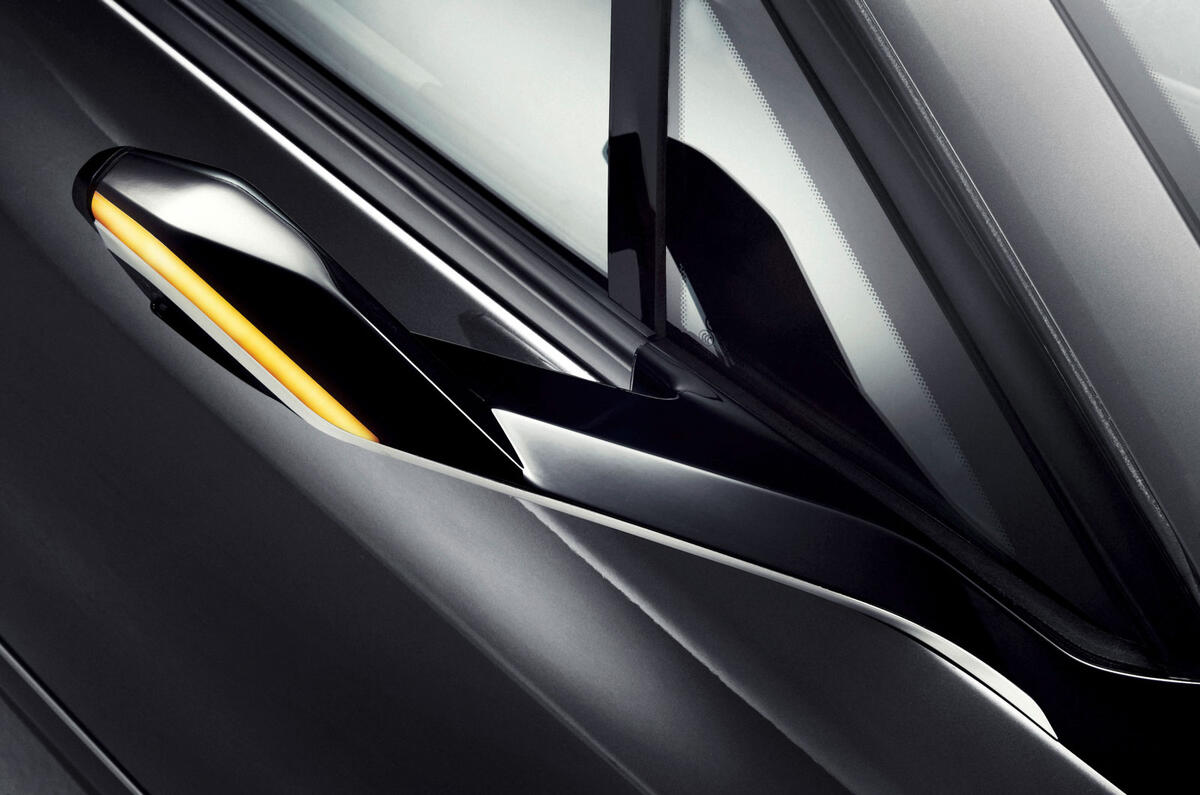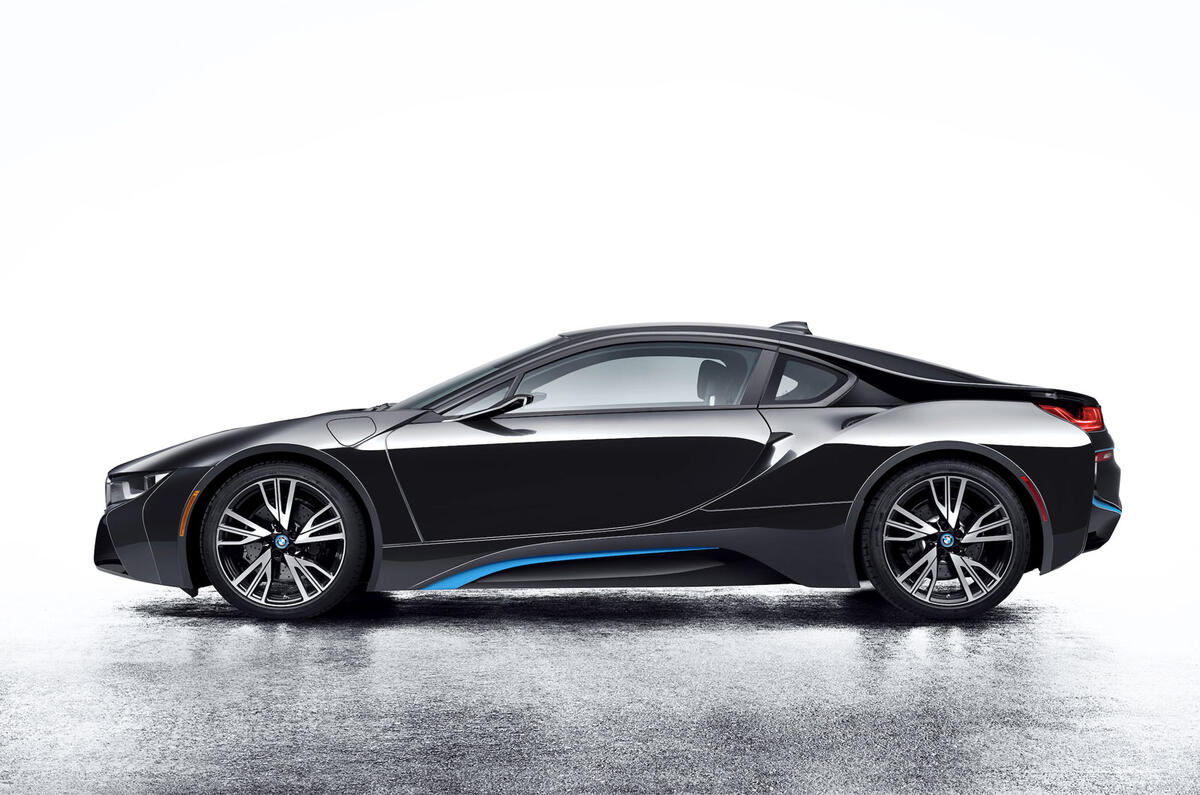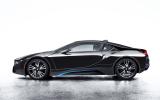BMW has revealed a new concept version of the BMW i8 that features cameras in place of its door mirrors.
Appropriately named the i8 Mirrorless, the concept demonstrates the large number of advantages that using wide-angled cameras can bring to driving, including increased visibility and the use of intelligent hazard alerts.
Three cameras – two on the doors and a third on the rear window – work together to produce one image, which is displayed on a screen that replaces the rear-view mirror. BMW says this image provides the driver with a wider field of vision than conventional mirrors, enabling it to “eliminate dangerous blind spots”.
The use of intelligent technology also allows the Mirrorless system to predict imminent hazards, such as fast-approaching cars and unsafe lane changes. The driver is then shown warning symbols on the screen so they can react appropriately. Parking is also catered for, with superimposed trajectory lines to help drivers direct the i8 into parking spaces.
Another key advantage the system brings is lower air resistance. Because the door cameras can be significantly smaller than mirrors, their contribution to drag is greatly reduced, bringing benefits to both the car’s performance and overall efficiency. This slimming down of parts also has obvious benefits for design.
BMW says its cameras are not only more advanced than mirrors but they’re also easier to use, because unlike conventional mirrors they don’t need to be adjusted to cater for different drivers. And because of the placement of the display screen, passengers have a full view of what’s happening behind.
The i8 Mirrorless concept was revealed at the CES in Las Vegas alongside the i8-based i Vision Future Interaction and a concept version of the BMW i3, called the i3 Extended Rearview Mirror that also utilises cameras to improve vision.



















Join the debate
Add your comment
Half the job done.
We will then be back to where we were in 1980.
Thick A, B, C pillars,
I've been looking forward to this development
Like "Walking" I think having the cameras stuck out on arms is a shame. What a pedestrian hazard! If they can't be right up on the door, we may have to forgo this concept.
And why have what looks like a conventional mirror at the top of the screen? (I know, that's where drivers expect it) I eagerly scanned the pics to find it integrated into the headlining or dash. Disappointing.
How about a Head Up Display projected at the top of the driver's field of view, where the sky normally is?
You heard it here first....